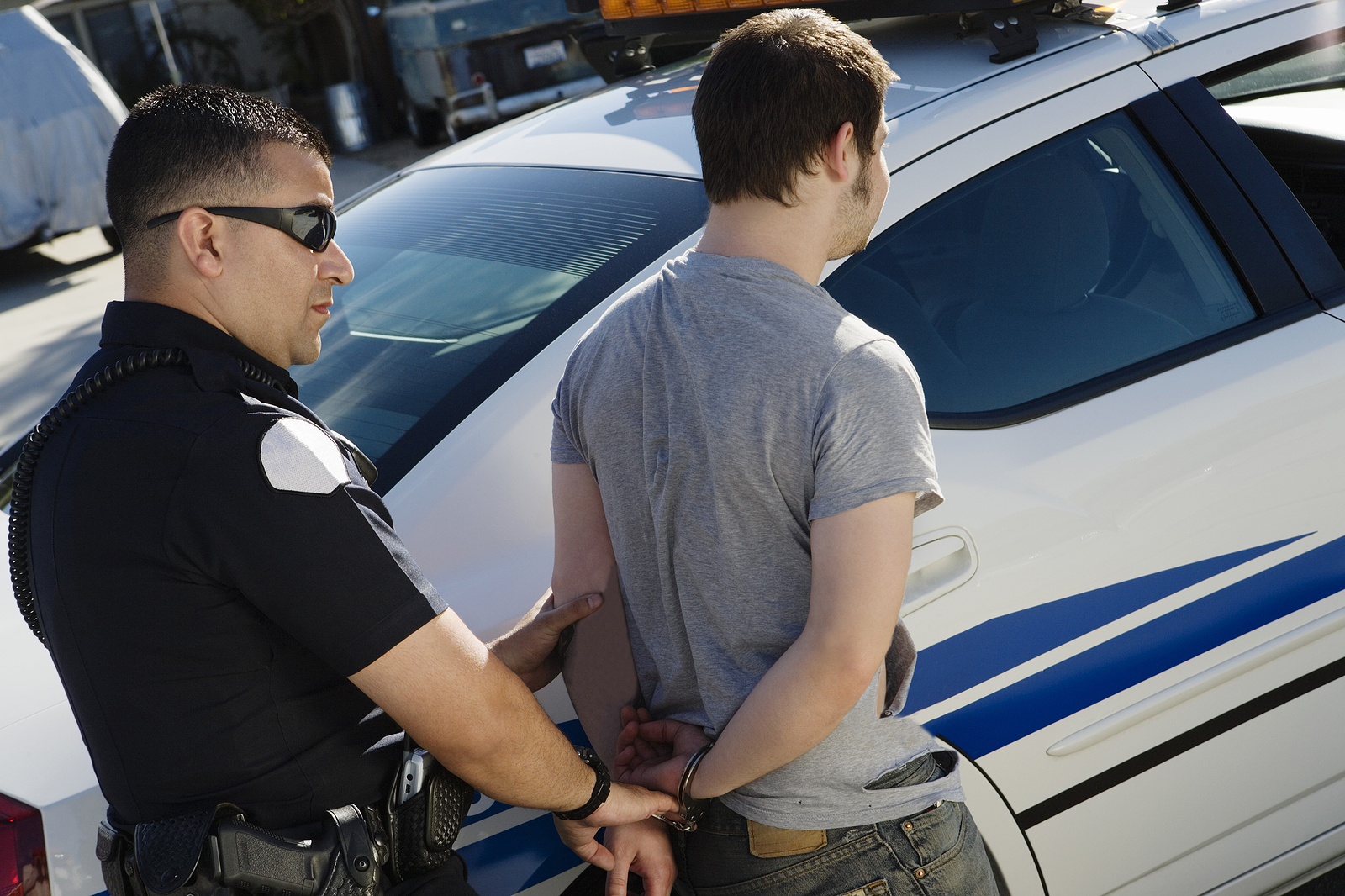
Police Violence and Racial Discrimination in Public Schools
Removing police from schools has been part of the Black Lives Matter movement for years. Research shows that schools with a police presence are more likely to refer children to law enforcement, even for non-serious behaviors. According to the Education Week Research Center, black students in most states are more likely to be arrested than other students while at school. Instances of police violence in schools and black students as young as six years old being shot, handcuffed, or improperly restrained while crying that they “can’t breathe” are not uncommon and pose serious and costly liability for school districts.
Data analyzed by the American Civil Liberties Union show that millions of students — especially black students — attend schools that have police officers but lack recommended levels of nursing staff, school counselors, social workers, and/or psychologists. According to the ACLU, the failure to hire enough support staff to serve students’ mental health needs may result in discriminatory treatment and denial of students’ rights to a free and appropriate education. This is especially prevalent in districts that serve underprivileged and black students and that face a shortage of resources in general.
Emerging data demonstrate a troubling racial gap in the way police officers behave toward black students. In predominantly white school districts, police and resource officers are most worried about protecting students from intruders, while in urban and predominantly black districts police perceive and treat black students as the primary threat. Our firm has worked on numerous constitutional deprivation (Section 1983) and civil rights claims, stemming either from police violence or a school’s failure to provide adequate services and positive behavioral interventions, that have resulted in physical and emotional harm and/or wrongful death and have cost schools districts hundreds of thousands of dollars in litigation.
American Federation of Teachers urges removal of police officers from public schools
Research also shows that the presence of police in schools does not improve student safety and can actually lead to harm caused by incidents of police violence in schools. Racial justice protests and movements triggered by the death of George Floyd have resulted in a national push to remove police officers from schools. The Minneapolis school district ended its agreement with the city’s police department and removed officers from its campuses. Districts in Portland, Ore.; Denver; Charlottesville, Va.; and Oakland, Calif., are planning to do or have done the same. The American Federation of Teachers (AFT), one of the country’s largest teacher unions, passed a groundbreaking resolution, “Confronting Racism and In Support of Black Lives,” calling for separation of the function of school safety from policing and police forces. The resolution states that school security personnel should be trained as peace officers and integrated within the school community, focused on nonviolent conflict resolution and minimal use of force as are educators and school district staff. AFT also called on local school boards to pass and enforce anti-racist policies and to support efforts to address the needs of children, including the addition of resources like social workers, counselors, nurses, and restorative justice programs.
Public schools have a duty, and are legally required, to protect students from racial discrimination
Students from preschool programs through the college and university level are federally protected from discrimination. Schools have a duty to be proactive to prevent and respond to discrimination, based on standards established in Title VI of the Civil Rights Act of 1964. Title VI prohibits discrimination on the basis of race, color, or national origin in any program or activity that receives federal funds or other federal financial assistance. This prohibition applies to intentional discrimination as well as to procedures, criteria, or methods of school administration that appear neutral on their face but have a discriminatory effect.
Discrimination can result from consistent patterns of actions by decision makers or school administrators that impose much greater harm on black students than on other students. This includes practices of inappropriate discipline, restraints, and seclusion; law-enforcement referrals; and failure to use positive behavioral interventions and supports to address student conduct. A hostile environment that results from certain practices or failure to eliminate harassment — including unnecessary or unjustified police violence — is another form of discrimination that can have negative effects on black students’ safety and ability to access educational benefits. Continued police violence in schools and mistreatment of black students, in violation of industry standards that require school districts to address student behaviors in an appropriate way, can amount to discrimination and civil rights violations and expose districts to costly lawsuits.
Black students in K-12 schools are far more likely to be disciplined, referred to law enforcement, and be victims of police violence in schools
The Government Accountability Office (GAO) found that black students are disproportionately disciplined through suspension or expulsion or referred to law enforcement. The GAO noted that disparities in student discipline may support a finding of discrimination, racial bias, and systemic racism, but also acknowledged that other factors could be involved. Federal civil rights investigations have also found that black students are punished more harshly than white students, even when both engaged in identical or similar behaviors. GAO also emphasized that “students who experience discipline that removes them from the classroom are more likely to repeat a grade, drop out of school, and become involved in the juvenile justice system” and that studies have shown that this can result in decreased earning potential and added costs to society, such as incarceration and lost tax revenue.
Studies have also shown that schools with larger minority and low-income populations are more likely to implement criminal justice-oriented disciplinary policies and less likely to provide psychological or behavioral care. In 2012, the U.S. Department of Education Office of Civil Rights (OCR) released results of its investigation of disciplinary practices in Delaware’s largest public school district. The OCR found that black students in the Christina School District were disciplined more harshly and more frequently because of their race. Although the district entered into a resolution agreement with the OCR, it was not immune from civil claims brought on by students and their families. The OCR’s agreement with the district highlighted ways Christina and other districts can ensure equal treatment and discipline of black students, including but not limited to:
- Ensuring, to the maximum extent possible, that misbehavior is addressed in a way that does not require removal of the student from school
- Providing students who engage in disruptive behaviors with support services designed to decrease behavioral difficulties
- Reviewing and revising disciplinary policies, and implementing disciplinary practices that will effectively promote equity in discipline
- Providing training for staff and administrators on the disciplinary policies, and implementing programs for students, parents, and guardians to explain the district’s disciplinary policies and behavioral expectations
Black students with disabilities are victims of physical force and police violence in schools
Black students with disabilities are almost three times more likely to experience out-of-school suspensions or expulsion, according to a report from the National Center for Learning Disabilities. The School Liability Expert Group has worked on cases in which black students, including those with disabilities, are victims of repeated physical force and prohibited restraints that cause severe emotional and physical harm and even death. Many times, police officers, school resource officers, and other security personnel are involved in the restraint of students without appropriate training or knowledge of a student’s disability or behavioral struggles that would require the school to provide specific services, instead of physically restraining students, removing them from school, or referring them to law enforcement.
In one of our cases, a black student was shot after the school called the police when the student experienced a psychotic episode which could have been prevented by provision of appropriate services and treatment. In another case, security was called on a black student whom the teacher ordered removed from the classroom for a minor disruption. The incident could have been avoided or de-escalated if the teacher implemented the student’s behavior plan. Instead, two large men physically restrained and put all of their body weight on a student that was half their size causing physical injury to the student.
Schools are supposed to educate and nurture children. Statistics and discriminatory practices show that there is an opposite effect for black and other minority students who are wrongfully fed into the “school-to-prison pipeline” or forced to attend school in a hostile environment that has long-term negative psychological and educational effects on both the student and society.


